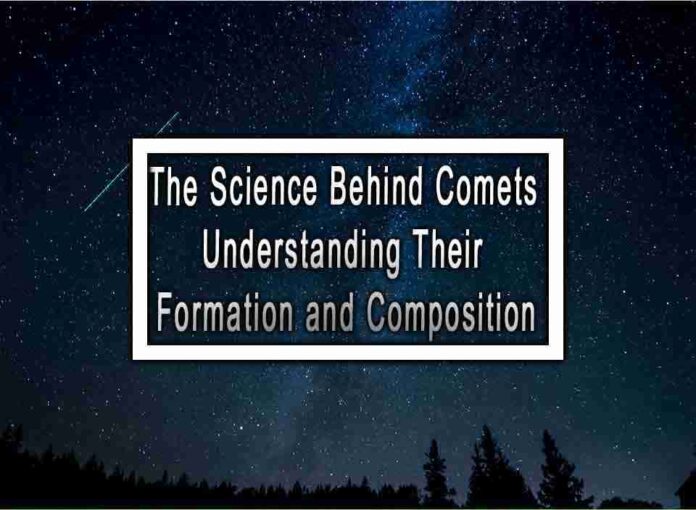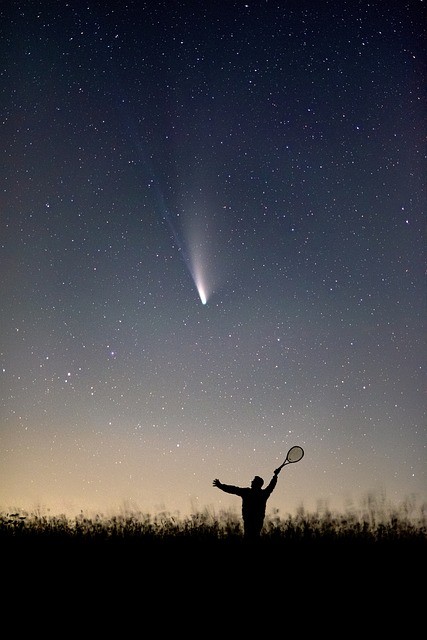Comets are celestial objects composed of ice, dust, gases, and rocky materials. They are considered to be some of the oldest remnants from the early stages of the solar system’s formation. Understanding the science behind comets involves examining their formation, composition, and behavior. Here’s an overview:
1. Formation:
- Comets are believed to have formed in the outer regions of the solar system, in a region called the Kuiper Belt (beyond Neptune) or the Oort Cloud (much farther out).
- These regions contain a mixture of volatile ices (such as water, carbon dioxide, methane, and ammonia) and solid materials (dust, rock).
- Occasionally, gravitational interactions with other objects or passing stars can disturb comets’ orbits, sending them toward the inner solar system.
2. Composition:
- Comets consist of two main components: the nucleus and the coma.
- Nucleus: The solid core of a comet is known as the nucleus. It is typically a few kilometers in diameter and contains a mix of ices and rocky materials. The nucleus is covered by a layer of dark organic material and dust, creating a protective crust.
- Coma: As a comet approaches the Sun, the heat causes the ices in the nucleus to vaporize, creating a glowing coma—a temporary atmosphere of gas and dust around the nucleus.
- Tail: The solar wind and radiation pressure from the Sun push the coma’s gas and dust away from the nucleus, forming a glowing tail that points away from the Sun due to the solar wind’s direction.
3. Spectroscopy:
- Observations using spectroscopy allow scientists to analyze the composition of comets by studying the light they emit or reflect. Different chemicals emit and absorb specific wavelengths of light, creating distinct spectral lines.
- Spectroscopic analysis has revealed the presence of water vapor, carbon dioxide, methane, ammonia, and other volatile gases in comets.
4. Comet Types:
- Comets are categorized into two main types: long-period comets and short-period comets.
- Long-period comets come from the Oort Cloud and have orbits that take thousands to millions of years to complete.
- Short-period comets originate from the Kuiper Belt and have orbits that typically take less than 200 years to complete.

5. Studying Comets:
- Spacecraft missions, such as the European Space Agency’s Rosetta mission, have provided detailed data on comets. Rosetta even deployed a lander called Philae to the nucleus of comet 67P/Churyumov-Gerasimenko.
- Observatories on Earth and in space continue to study comets to learn more about their composition, structure, and behavior.
Studying comets provides insights into the early solar system’s conditions and the processes that led to the formation of planets. By analyzing their composition and behavior, scientists can piece together the puzzle of how our solar system came into existence billions of years ago.











